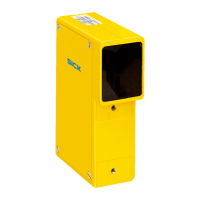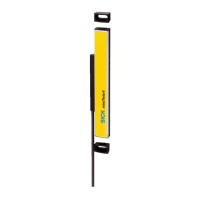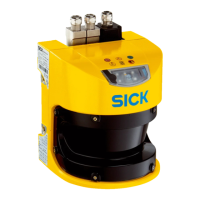2 Safety information
2.1 General safety notes
DANGER
If t
he safety component is integrated incorrectly, the dangerous state may be ended to
late.
b
Plan the integration of the safety component in accordance with the machine
requirements, see "Project planning", page 17.
Laser class 1
CAUTION
If an
y operating or adjusting devices other than those specified in this document are
used or other methods are employed, this can lead to dangerous exposure to radiation.
b
Only use the operating or adjusting devices specified in this document.
b
Only follow the methods specified in this document.
b
Do not open the housing, except for the purposes of the installation and mainte‐
nance work specified in these operating instructions.
Figure 1: Laser class 1
T
his device complies with the following standards:
•
IEC 60825-1:2014
•
21 CFR 1040.10 and 1040.11, except compliance with IEC 60825-1:2014, as
described in Laser Notice No. 56 dated 08.05.2019
The laser is eye-safe.
The laser marking is located on the underside of the safety laser scanner.
2.2 Intended use
The safety laser scanner is an electro-sensitive protective device (ESPE) and is suitable
f
or the following applications:
•
Hazardous area protection
•
Hazardous point protection
•
Access protection
•
Mobile hazardous area protection (protection of automated guided vehicles)
The safety laser scanner must only be used within the limits of the prescribed and
specified technical data and operating conditions at all times.
Incorrect use, improper modification of or tampering with the safety laser scanner will
invalidate any warranty from SICK; in addition, any responsibility and liability of SICK for
damage and secondary damage caused by this is excluded.
SAFETY INFORMATION 2
8024596/15VP/2019-11-15 | SICK O P E R A T I N G I N S T R U C T I O N S | nanoScan3 I/O
9
Subject to change without notice

